Portuguese Calçada Across the World
Its origin and worldwide expansion
30.01.2017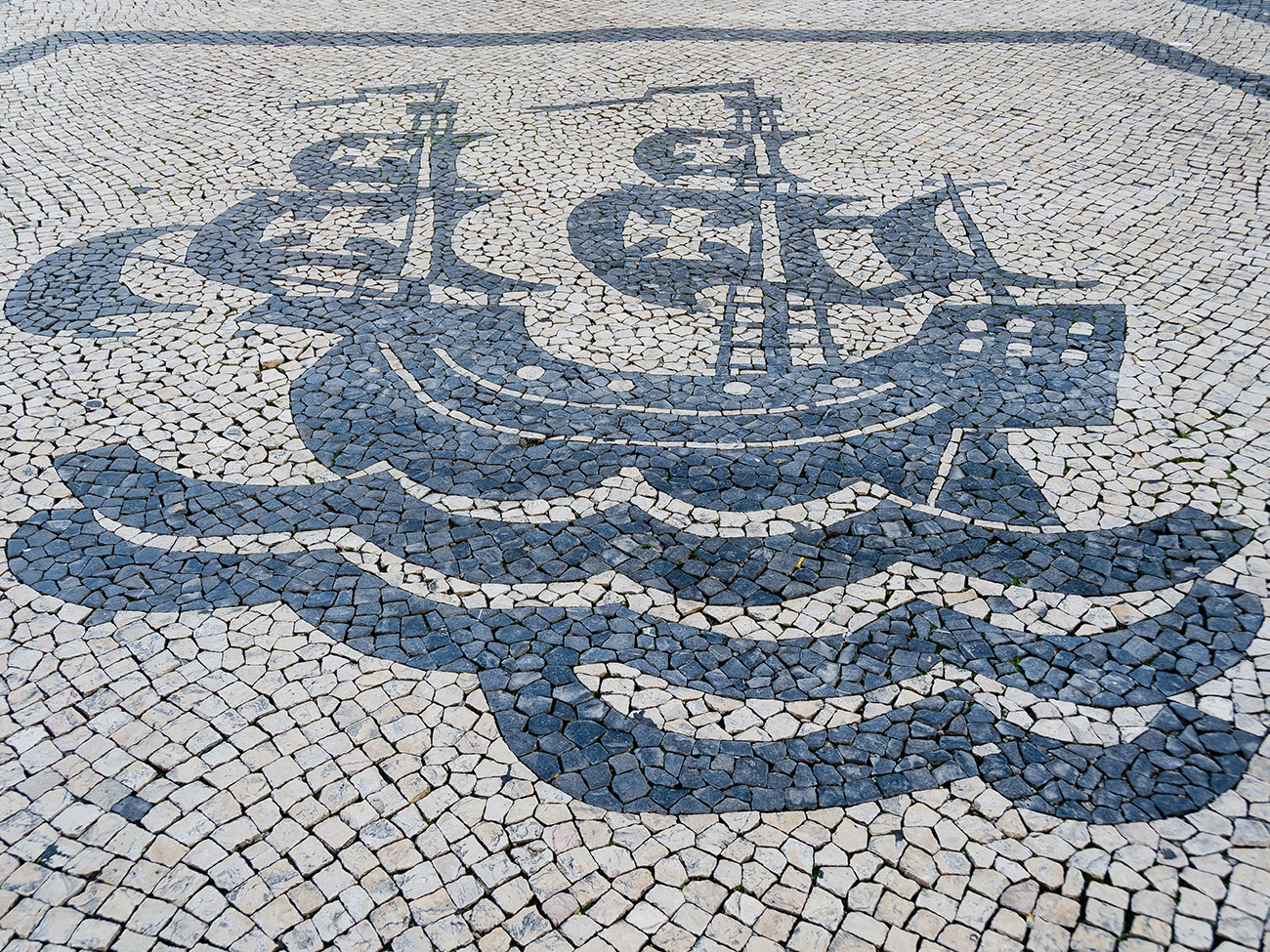
In Portugal, calçada (cobblestone pavements) began to be implemented in the 15th Century. It was also during this time that Portugal began to carry these stones to its territories of influence, using them to pave new cities.
This is due to the fact that many of the ships that set off to these destinations were empty, so that they could return filled with local goods and merchandise. As such, on their departure, they needed to increase the cargo in order to guarantee navigation stability – what we now call ballast. The solution found was to fill the ships with Portuguese stone.
When they arrived, the lack of storage space available for the stones led the Jesuits and the military to begin applying them as a pavement for the streets that were being carved in these “new” territories.
Later on, around the mid 19th Century, Portuguese calçada began to be implemented within national borders looking much as it does today – sidewalks covered with dark and light limestone as well as basalt, placed to create drawings and patterns.
This happened in Lisbon in 1842, through the labour of a group of prisoners (known at the time as the “grilhetas”) who completed the first limestone calçada inside the São Jorge Castle (which at the time served as a prison), under the command of lieutenant-general Eusébio Pinheiro Furtado, engineer and Governor of the castle. With its zigzag design, this style of pavement was unusual for the time, causing uproar with the press.
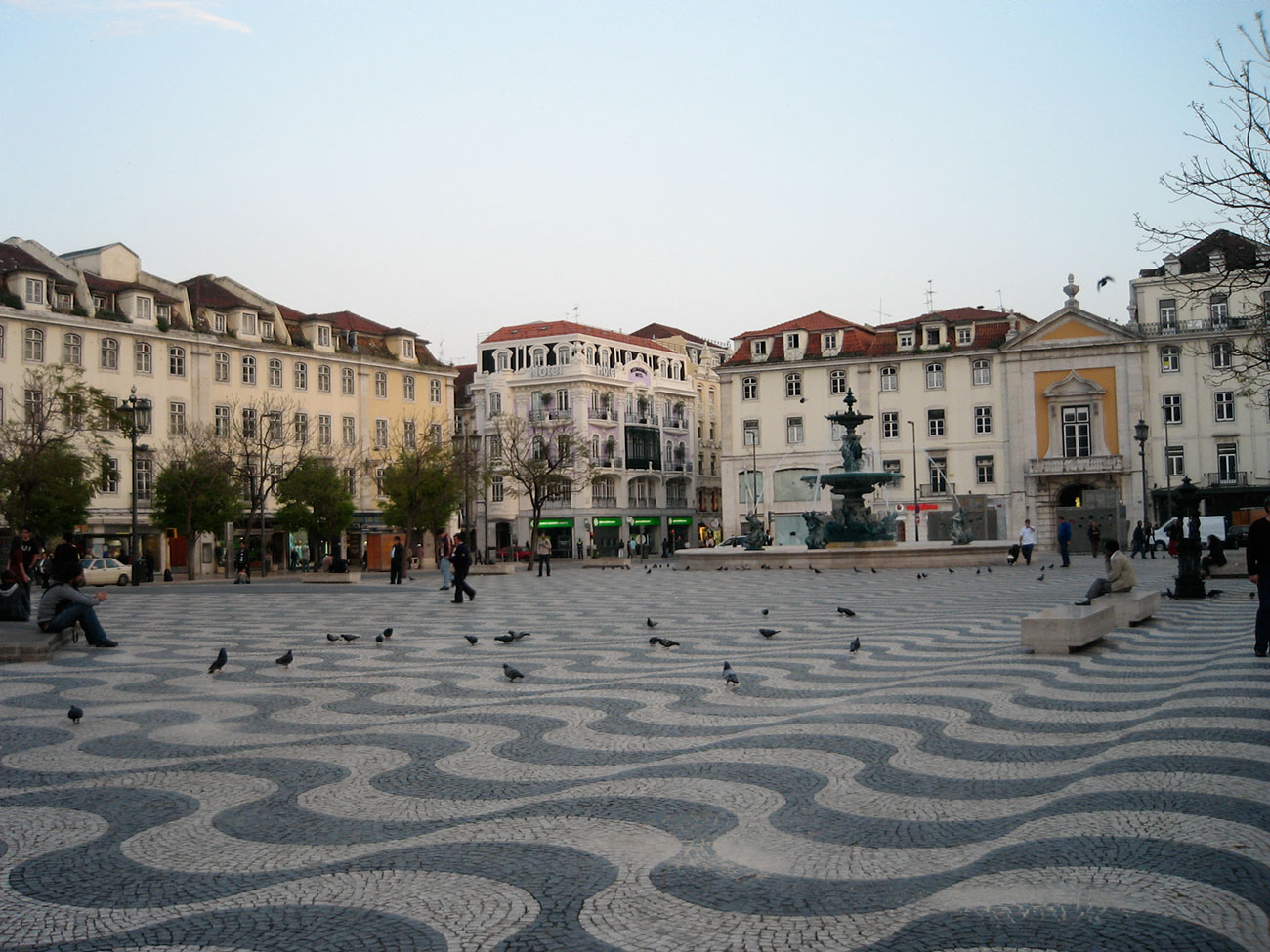
Square D. Pedro IV, Rossio, Lisbon © vera46
Following the success of this endeavour, funds were released to Eusébio Furtado for the prisoners to pave the Praça do Rossio, occupying an area of 8.712m². The square was completed in 1848, with designs that paid homage to the Portuguese discoveries, and became known as Mar Lago (Sea Lake). This trend quickly spread across the country and the colonies, where veritable masterpieces were produced, ennobling urban public spaces with an ideal of city modernization.
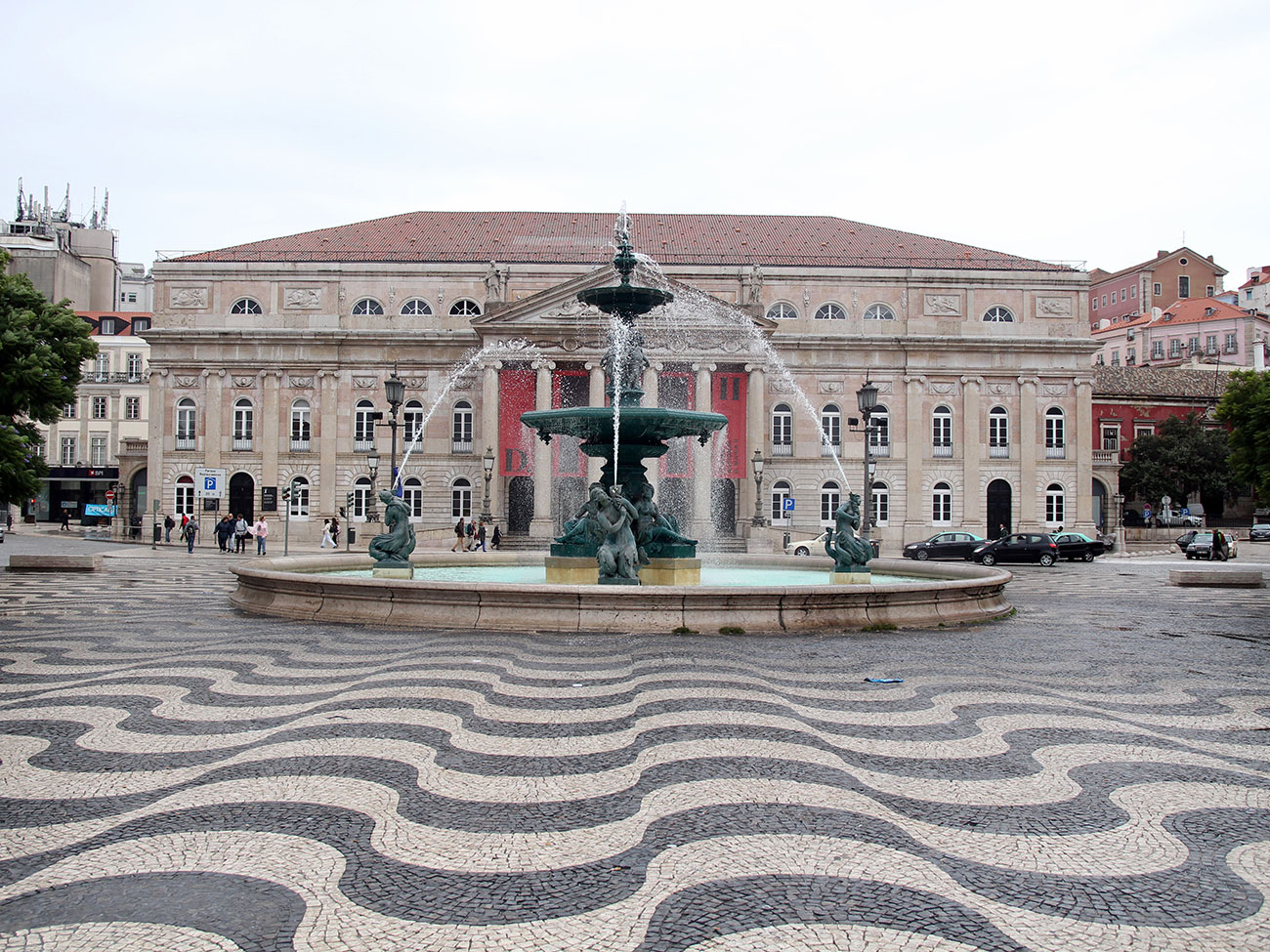
Square D. Pedro IV, Rossio, Lisbon © Bex Walton
One far-away example of the expansion of Portuguese calçada is Macau – the former Portuguese administrative territory and perhaps the area outside of Portugal with the largest area of calçada. The motifs of the designs are mostly of caravels, compass roses, shells, fish, stars or ocean waves. The area of calçada in Macau has continued to grow, even after the transfer of sovereignty to the People’s Republic of China in 1999, it is still implemented by Chinese pavers taught by Portuguese masons.
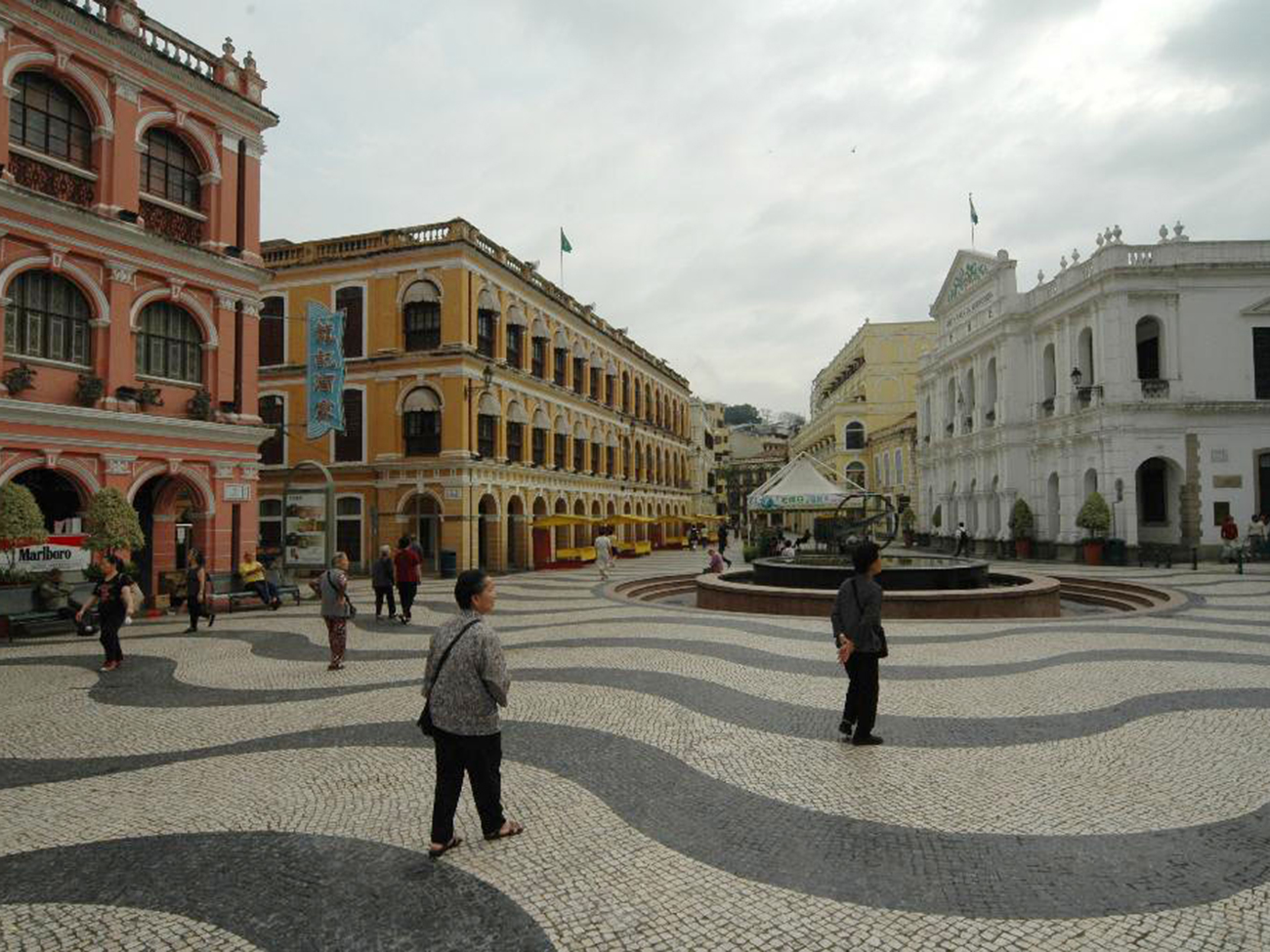
Senate Square, Macao © Peter Fong
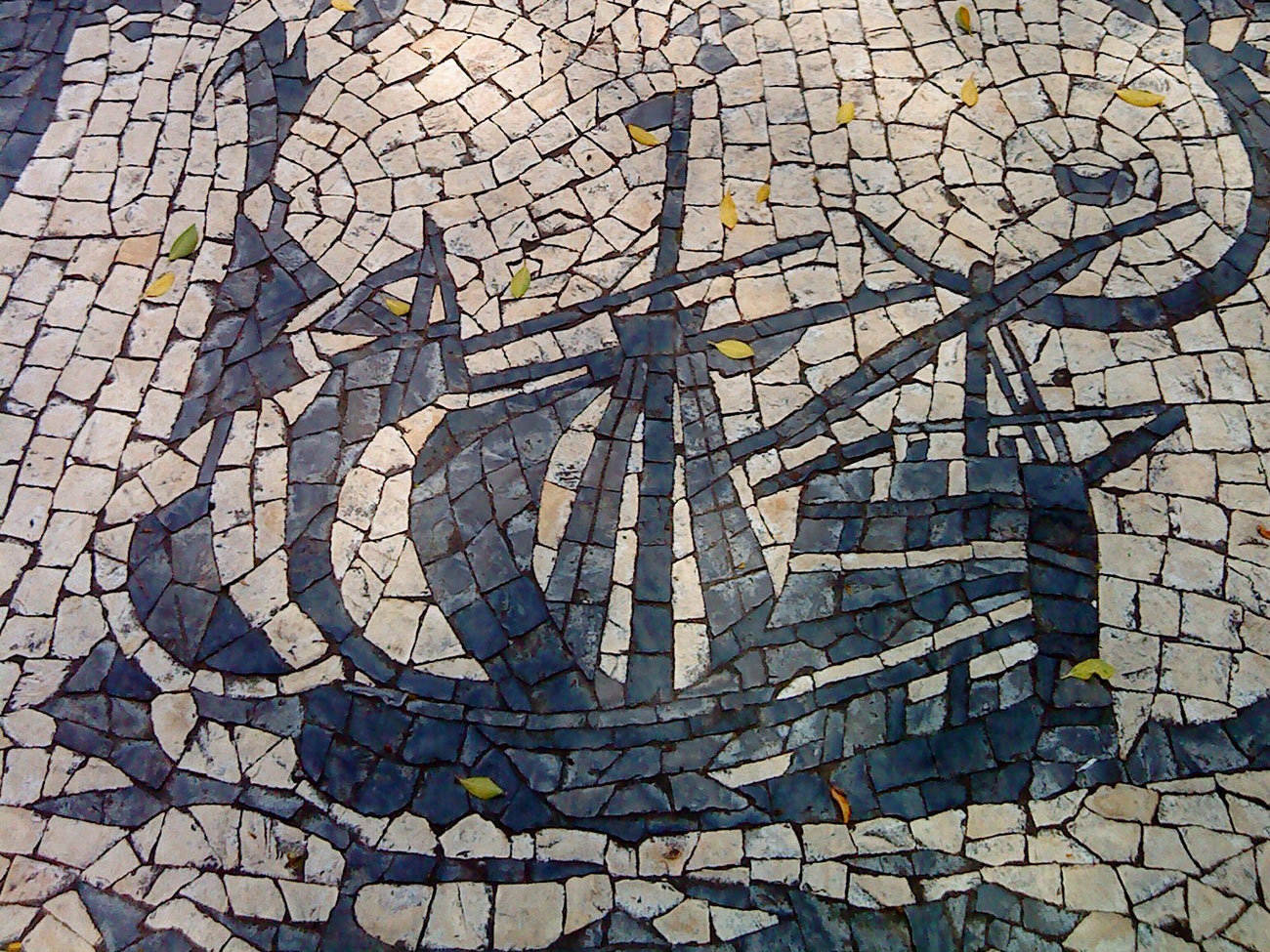
Os Lusíadas, Garden Luís de Camões, Macao © Keiziro
Currently, we can still find old pavements of Portuguese calçada in Brazil, Cape Verde, Angola, Mozambique, India and Timor, and new examples can be found in Spain and the United States.
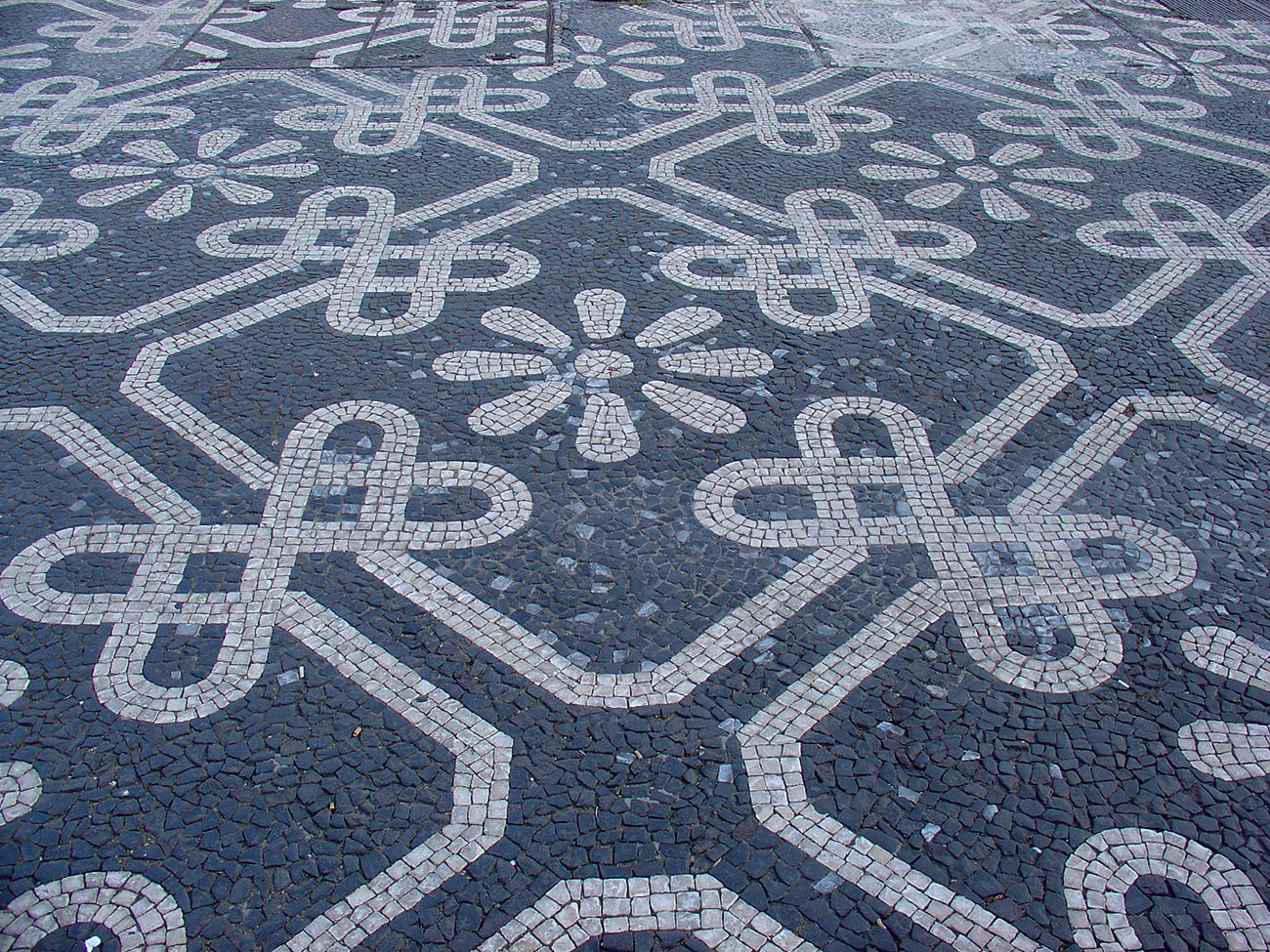
© Yelkrokoyade